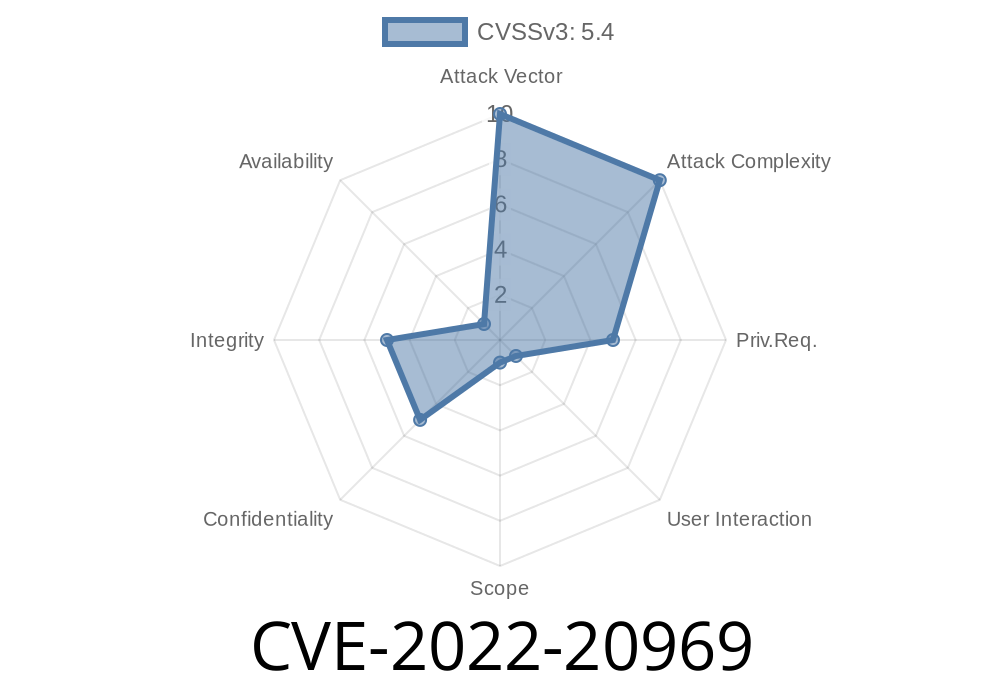A newly disclosed vulnerability, CVE-2022-20969, affects multiple management dashboard pages of Cisco Umbrella, a cloud security platform, and could lead to severe security breaches. The vulnerability allows an authenticated, remote attacker to carry out a cross-site scripting (XSS) attack against a user of the Cisco Umbrella management dashboard. This can result in unwanted script execution and unauthorized access to sensitive browser-based information.
The root cause of the vulnerability lies in the unsanitized user input, which permits an attacker to inject custom JavaScript code into the affected web application. By persuading a user of the management dashboard to click on a malicious link, an attacker can successfully exploit the vulnerability and execute arbitrary script code within the context of the dashboard interface.
We will further discuss the vulnerability's technical details, potential attack scenarios, code snippets, and links to original references so that you can understand the issue and take appropriate measures to protect your organization.
The vulnerable code within the affected management dashboard web application may look like this
function updateUser(firstName, lastName) {
document.getElementById('userProfile').innerHTML =
'Welcome, ' + firstName + ' ' + lastName + '!';
}
Here, the code updates the user's profile with their provided first and last names without proper input validation or sanitization. An attacker could exploit this by sending a malicious payload, such as:
updateUser('<img src=x onerror=alert(1)>');
If the injected code executes successfully, an alert box displaying "1" will pop up, indicating that the XSS attack has successfully taken place.
Exploit Details
The exploitation process follows these steps.
1. An attacker first crafts a malicious JavaScript payload that exploits the vulnerability. The attacker then hosts this payload on a web server under their control.
2. The attacker sends a phishing email or creates a malicious website containing a specially crafted URL that, when clicked, injects the malicious JavaScript payload into the vulnerable Cisco Umbrella management dashboard. This could also be done through chat messages or social media.
3. A user with access to the Cisco Umbrella management dashboard clicks on the malicious link, inadvertently executing the attacker's payload.
4. The payload runs in the context of the dashboard, allowing the attacker to perform actions such as stealing session cookies or sensitive account information, bypassing access controls, or defacing the dashboard interface.
For more details about this vulnerability, you can refer to the following links
1. Cisco's official security advisory: https://tools.cisco.com/security/center/content/CiscoSecurityAdvisory/cisco-sa-umbrella-xss-QxC7cYwC
2. CVE (Common Vulnerabilities and Exposures) entry for CVE-2022-20969: https://cve.mitre.org/cgi-bin/cvename.cgi?name=CVE-2022-20969
Conclusion
It is essential to keep your organization's security posture robust by staying up to date with the latest threats, vulnerabilities, and patches. For organizations using Cisco Umbrella, it's imperative to apply the necessary patches and mitigations provided by Cisco to safeguard against any potential exploitation of the CVE-2022-20969 vulnerability. Additionally, employees should be educated on how to identify and avoid clicking on phishing links to minimize the risk of compromise through XSS attacks.
Timeline
Published on: 11/04/2022 18:15:00 UTC
Last modified on: 11/08/2022 15:19:00 UTC
